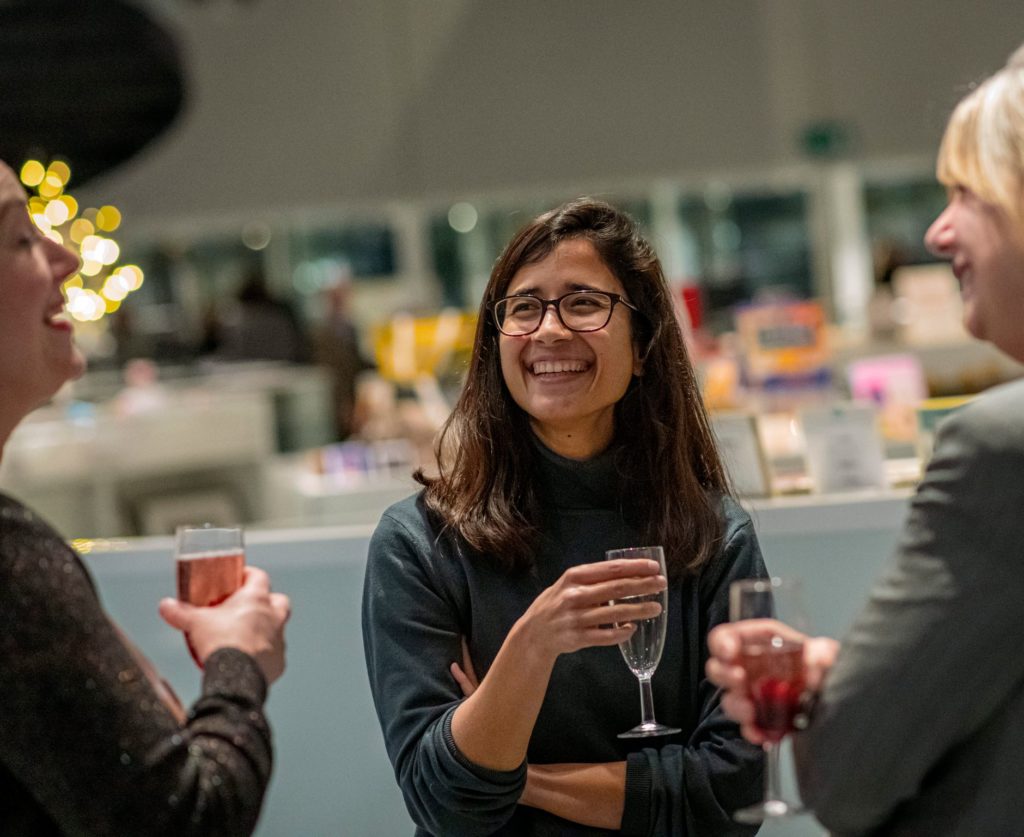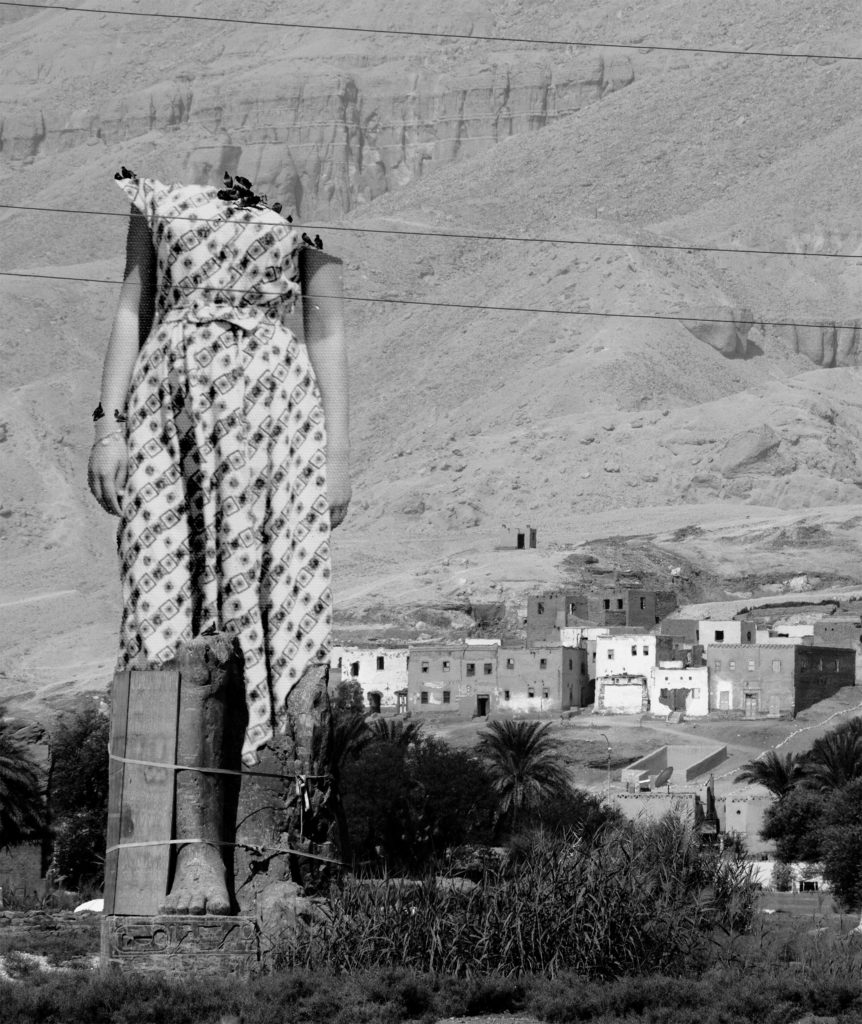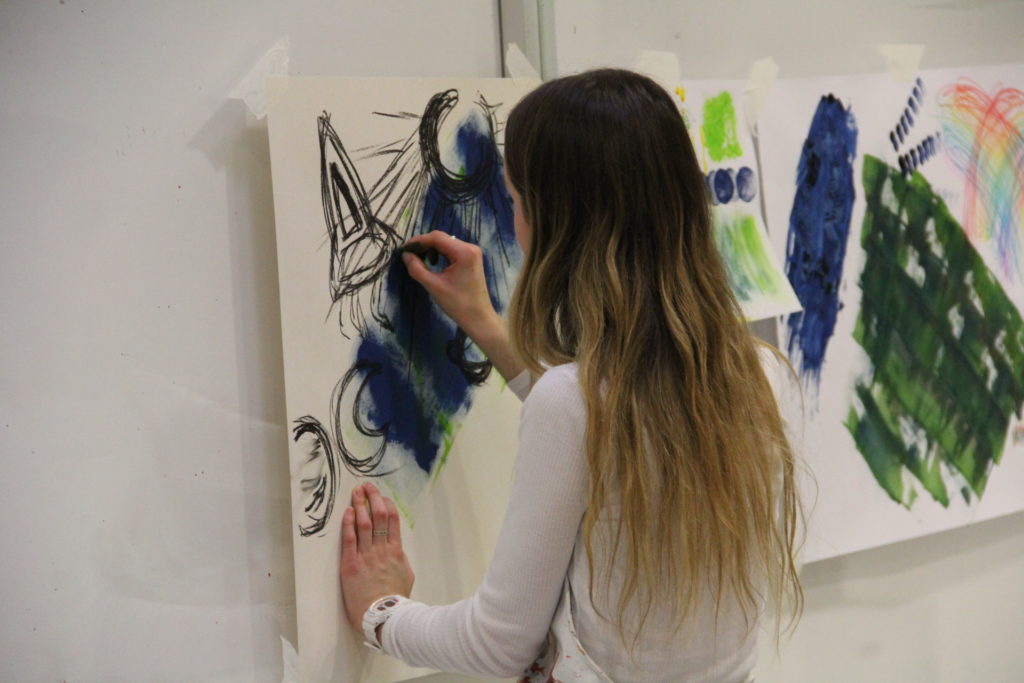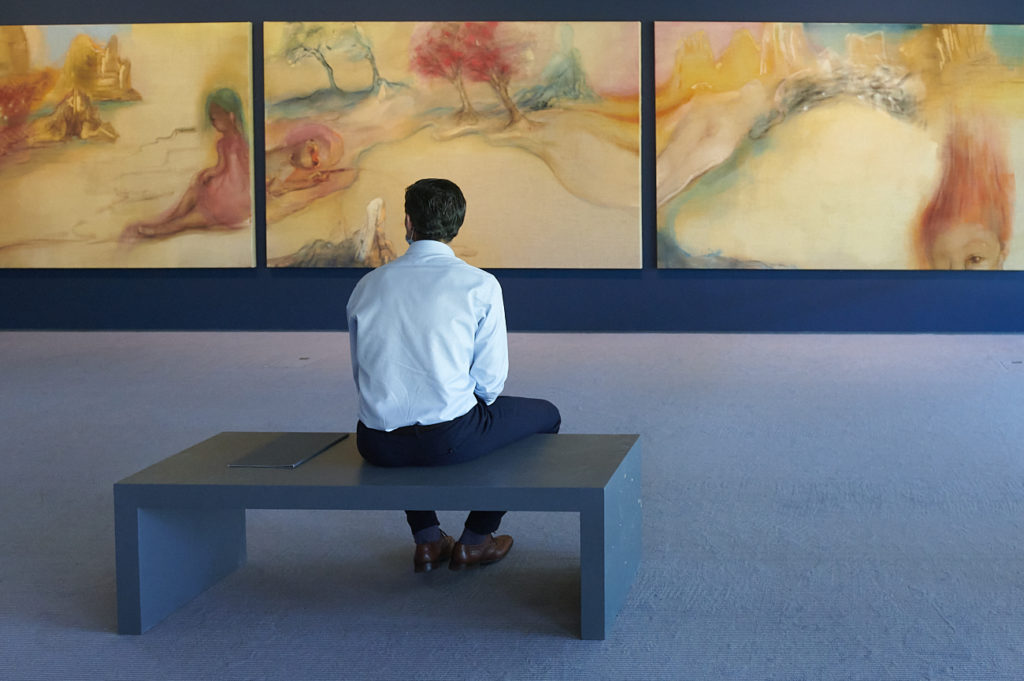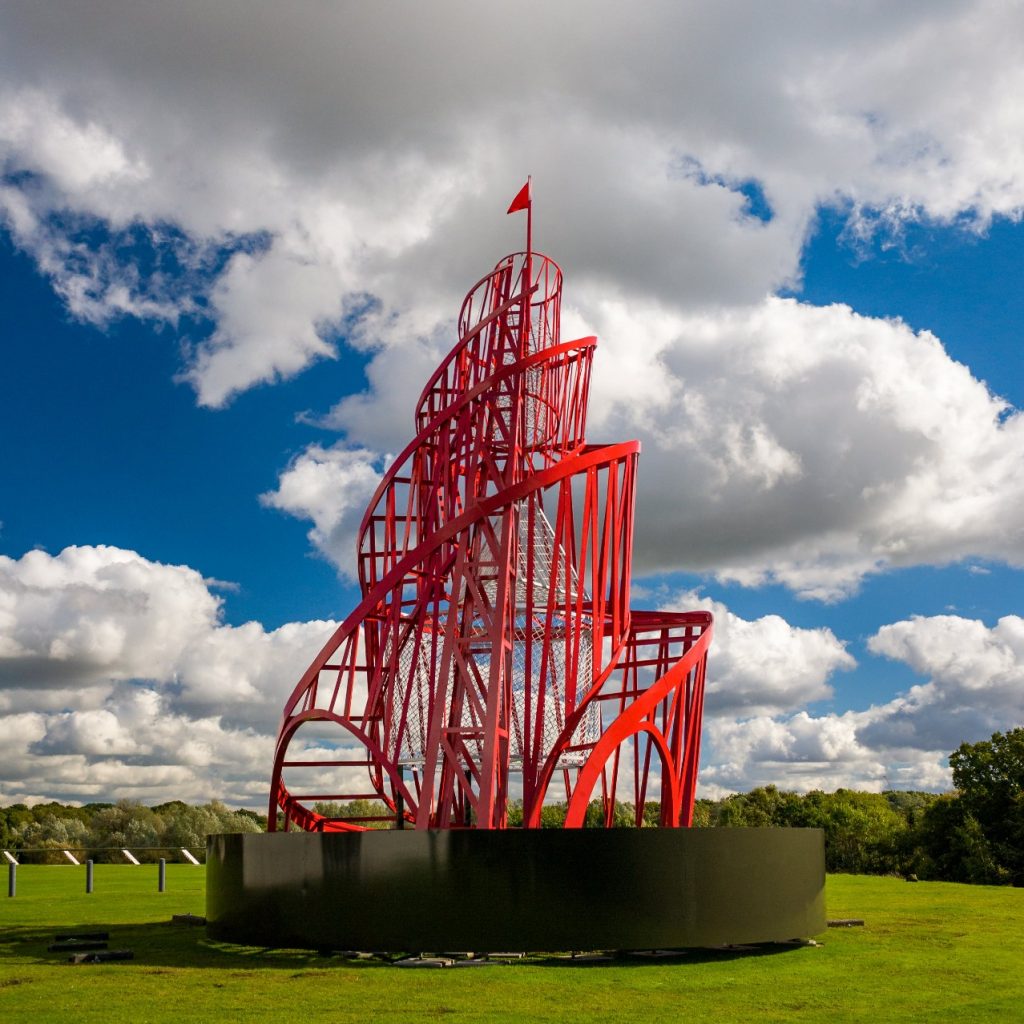The Fourth Pyramid Belongs To Her, Sara Sallam, 2017, Plate 1, digital photographic collage from the series The Fourth Pyramid Belongs to Her
This is your first museum residency; how has it been?
I think it’s been a really exciting experience to work on a new project that critically reflects on museum practices while being immersed in a museum context. The conversations I’ve had with those taking care of the collection have helped with familiarising myself with the thoughts currently circulating at the Sainsbury Centre. It’s a great opportunity to be here now as the museum actively questions and rethinks its history and role critically.
During your time here, you are making a new artwork, but your idea has changed since you arrived. How did this come about?
In my first week, I started reading about the history of the collection, trying to develop a response to some of the artefacts for the New Perspective podcast. While I had a different project in mind to work on during the residency, it made sense after doing this research to change my plans and work instead on a new project responding to the museum. It was definitely a risky decision to start something from scratch to be finished in the remaining three weeks.
In the work, you are focusing on three objects from the Sainsbury Centre collection: a fragment of a sunk relief: a mourner; a Mummy pectoral; and a Portrait of a boy removed from his embalmed body. Why were you drawn to these objects?
I think my choice of focusing on three funerary objects comes from the previous themes I’ve been exploring in my work: how the ancient Egyptians are perceived and portrayed, the lack of mourning practices for their loss, and the many attitudes towards death experienced in Egypt. In a way, this led me first to the fragment of a sunk relief depicting the mourner and from there I began thinking of funerary objects and their functions for the deceased person. In particular, I wanted to question what it means to see them in an art museum here in Norwich. The close connection and significance of these objects to the ancient Egyptian human body was the main reason I chose them.
Your residency also involved engagement with local communities, including with school children in Swaffham. How was this experience?
I think I learned a lot from participating in dialogues with different age groups, not only with archaeologists, museum visitors, or family members but expanding this conversation to different audiences. Sharing my work during these activities and talks added a lot to my practice and opened up new ideas that I hadn’t thought of. In particular, it showed me how important it is to discuss difficult topics such as death, mourning, and coping with loss at a young age. I was very pleased to receive difficult questions and insightful comments on my work from schoolchildren.
This was a really positive aspect of my residency, not just to come here, make a new project, and then leave, but to actually have my ideas and thoughts challenged, reshaped, and expanded through these engagements during my stay.
The exhibition Visions of Ancient Egypt was timed to coincide with the centenary of the discovery of Tutankhamun’s tomb and the bicentenary of the decipherment of hieroglyphics. What do you think of how these anniversaries have been marked and what it says about contemporary discourse related to ancient Egypt?
First of all, it’s exciting to be participating in the exhibition Visions of Ancient Egypt because of its premise of a critical perspective of the past. In my opinion, I think because it opened earlier than other events, it set the tone for what followed. Now exhibitions need to be even more self-critical.
I think the decipherment of hieroglyphics was a great historical moment to finally be able to hear the ancient Egyptians and understand their thoughts, feelings, and practices. The discovery of Tutankhamun’s tomb needs, however, more nuance. I’m particularly uncomfortable with how it is often shaped as a celebration. It surely did contribute to the development of Egyptology and the field of archaeology, but it also marks the desecration of an ancient Egyptian tomb and a violent act performed on an ancient Egyptian body.
It’s great that these anniversaries are prompting museums to host conversations for collective thinking and reflection, but we definitely need to be much more critical of the colonial context in which these discoveries are situated and its ever-present implications.
